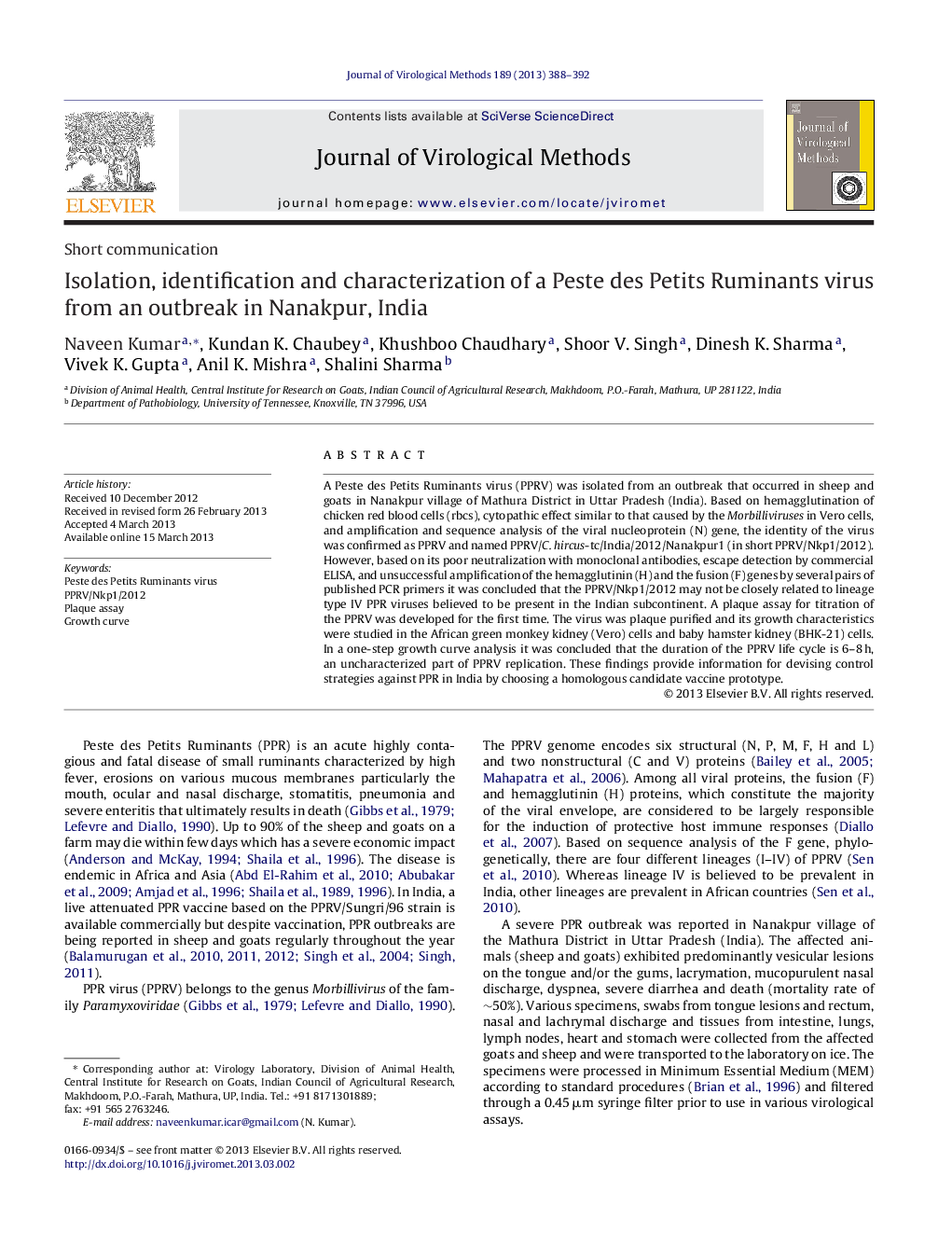| Article ID | Journal | Published Year | Pages | File Type |
|---|---|---|---|---|
| 3406705 | Journal of Virological Methods | 2013 | 5 Pages |
•Peste des Petits Ruminants virus was isolated from a field outbreak in India.•Identity of the virus was confirmed by amplification and sequence analysis of N gene.•Virus reacted poorly with the diagnostic reagents used for PPR diagnosis in India.•A plaque assay for PPR virus was first time established.•In one step growth curve, duration of PPRV life cycle was determined (6–8 h).
A Peste des Petits Ruminants virus (PPRV) was isolated from an outbreak that occurred in sheep and goats in Nanakpur village of Mathura District in Uttar Pradesh (India). Based on hemagglutination of chicken red blood cells (rbcs), cytopathic effect similar to that caused by the Morbilliviruses in Vero cells, and amplification and sequence analysis of the viral nucleoprotein (N) gene, the identity of the virus was confirmed as PPRV and named PPRV/C. hircus-tc/India/2012/Nanakpur1 (in short PPRV/Nkp1/2012). However, based on its poor neutralization with monoclonal antibodies, escape detection by commercial ELISA, and unsuccessful amplification of the hemagglutinin (H) and the fusion (F) genes by several pairs of published PCR primers it was concluded that the PPRV/Nkp1/2012 may not be closely related to lineage type IV PPR viruses believed to be present in the Indian subcontinent. A plaque assay for titration of the PPRV was developed for the first time. The virus was plaque purified and its growth characteristics were studied in the African green monkey kidney (Vero) cells and baby hamster kidney (BHK-21) cells. In a one-step growth curve analysis it was concluded that the duration of the PPRV life cycle is 6–8 h, an uncharacterized part of PPRV replication. These findings provide information for devising control strategies against PPR in India by choosing a homologous candidate vaccine prototype.
